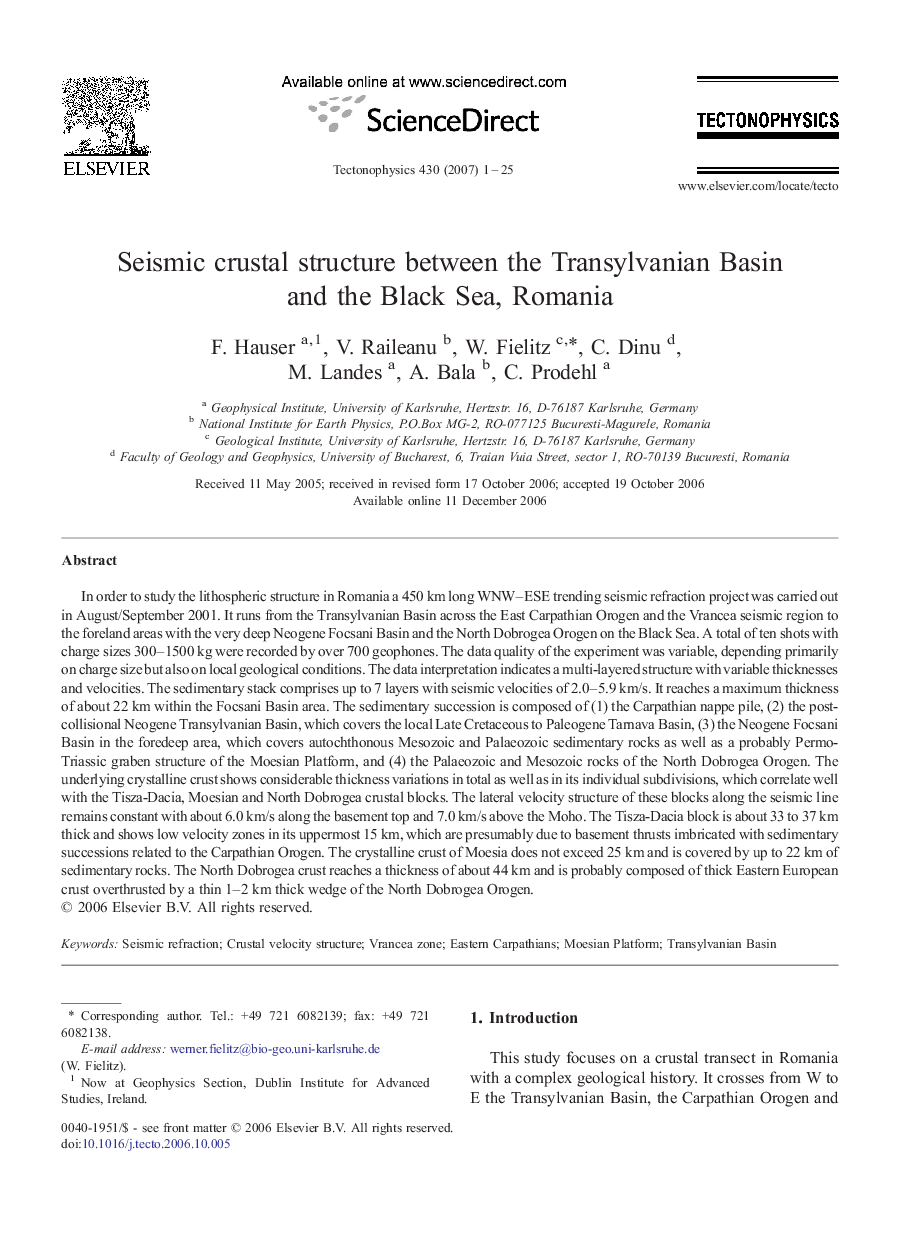| کد مقاله | کد نشریه | سال انتشار | مقاله انگلیسی | نسخه تمام متن |
|---|---|---|---|---|
| 4694743 | 1636939 | 2007 | 25 صفحه PDF | دانلود رایگان |

In order to study the lithospheric structure in Romania a 450 km long WNW–ESE trending seismic refraction project was carried out in August/September 2001. It runs from the Transylvanian Basin across the East Carpathian Orogen and the Vrancea seismic region to the foreland areas with the very deep Neogene Focsani Basin and the North Dobrogea Orogen on the Black Sea. A total of ten shots with charge sizes 300–1500 kg were recorded by over 700 geophones. The data quality of the experiment was variable, depending primarily on charge size but also on local geological conditions. The data interpretation indicates a multi-layered structure with variable thicknesses and velocities. The sedimentary stack comprises up to 7 layers with seismic velocities of 2.0–5.9 km/s. It reaches a maximum thickness of about 22 km within the Focsani Basin area. The sedimentary succession is composed of (1) the Carpathian nappe pile, (2) the post-collisional Neogene Transylvanian Basin, which covers the local Late Cretaceous to Paleogene Tarnava Basin, (3) the Neogene Focsani Basin in the foredeep area, which covers autochthonous Mesozoic and Palaeozoic sedimentary rocks as well as a probably Permo-Triassic graben structure of the Moesian Platform, and (4) the Palaeozoic and Mesozoic rocks of the North Dobrogea Orogen. The underlying crystalline crust shows considerable thickness variations in total as well as in its individual subdivisions, which correlate well with the Tisza-Dacia, Moesian and North Dobrogea crustal blocks. The lateral velocity structure of these blocks along the seismic line remains constant with about 6.0 km/s along the basement top and 7.0 km/s above the Moho. The Tisza-Dacia block is about 33 to 37 km thick and shows low velocity zones in its uppermost 15 km, which are presumably due to basement thrusts imbricated with sedimentary successions related to the Carpathian Orogen. The crystalline crust of Moesia does not exceed 25 km and is covered by up to 22 km of sedimentary rocks. The North Dobrogea crust reaches a thickness of about 44 km and is probably composed of thick Eastern European crust overthrusted by a thin 1–2 km thick wedge of the North Dobrogea Orogen.
Journal: Tectonophysics - Volume 430, Issues 1–4, 5 February 2007, Pages 1–25